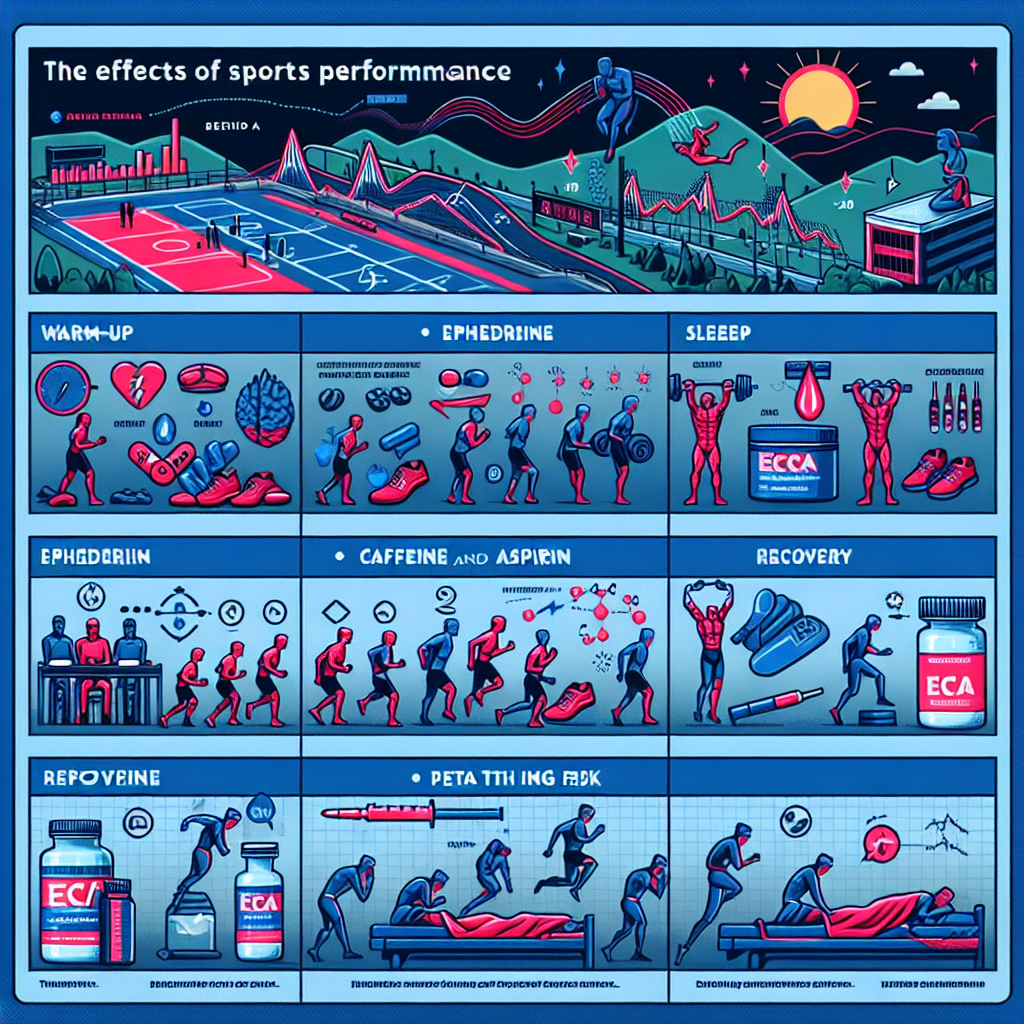-
Table of Contents
Effects of ECA on Sports Performance: An Overview
Sports performance is a crucial aspect of any athlete’s career. The ability to perform at the highest level and achieve optimal results is the ultimate goal for any athlete. In recent years, there has been a growing interest in the use of supplements and drugs to enhance sports performance. One such supplement that has gained popularity is ECA, a combination of ephedrine, caffeine, and aspirin. This article will provide an overview of the effects of ECA on sports performance, including its pharmacokinetics and pharmacodynamics, and discuss its potential benefits and risks.
The ECA Combination
The ECA combination is a popular supplement used by athletes to enhance their performance. It consists of ephedrine, caffeine, and aspirin, which work together to produce a synergistic effect. Ephedrine is a stimulant that increases heart rate and blood pressure, while caffeine is a central nervous system stimulant that improves alertness and focus. Aspirin, on the other hand, acts as a blood thinner and enhances the effects of ephedrine and caffeine.
The use of ECA in sports is not a new phenomenon. In the 1980s, it was commonly used by bodybuilders and weightlifters to improve their performance. However, its use has now extended to other sports, including endurance events such as running and cycling. The combination is often taken in the form of a pill or powder, and its effects can last for several hours.
Pharmacokinetics and Pharmacodynamics of ECA
Understanding the pharmacokinetics and pharmacodynamics of ECA is crucial in determining its effects on sports performance. The pharmacokinetics of a drug refers to how the body processes and eliminates it, while pharmacodynamics refers to the effects of the drug on the body.
Ephedrine, the main component of ECA, is rapidly absorbed in the gastrointestinal tract and reaches peak plasma levels within 2 hours of ingestion. It is then metabolized by the liver and excreted in the urine. Caffeine, on the other hand, is also quickly absorbed and reaches peak plasma levels within 30-60 minutes. It is metabolized by the liver and excreted in the urine. Aspirin is rapidly absorbed and reaches peak plasma levels within 30 minutes. It is metabolized by the liver and excreted in the urine and feces.
The pharmacodynamics of ECA are complex and involve multiple mechanisms of action. Ephedrine and caffeine work together to stimulate the central nervous system, leading to increased alertness, focus, and energy. They also increase heart rate and blood pressure, which can improve performance in endurance events. Aspirin, on the other hand, acts as a blood thinner and enhances the effects of ephedrine and caffeine. This combination of effects can lead to improved sports performance.
Potential Benefits of ECA on Sports Performance
The use of ECA in sports is primarily aimed at improving performance. Studies have shown that the combination of ephedrine and caffeine can lead to increased endurance, strength, and power. In a study by Bell et al. (2001), it was found that the use of ECA improved cycling performance by 7% compared to a placebo. Another study by Jacobs et al. (2003) showed that ECA supplementation improved sprint performance in trained athletes.
ECA has also been shown to have a positive effect on body composition. In a study by Greenway et al. (2000), it was found that ECA supplementation led to a decrease in body fat and an increase in lean body mass in obese individuals. This can be beneficial for athletes looking to improve their body composition for better performance.
Risks and Side Effects of ECA
While ECA may have potential benefits for sports performance, it is not without risks and side effects. The combination of ephedrine and caffeine can lead to increased heart rate and blood pressure, which can be dangerous for individuals with underlying heart conditions. It can also cause anxiety, insomnia, and gastrointestinal issues. Aspirin, when taken in high doses, can increase the risk of bleeding and stomach ulcers.
Furthermore, the use of ECA has been banned by many sports organizations, including the World Anti-Doping Agency (WADA). This is due to its potential to enhance performance and its potential health risks. Athletes who test positive for ECA can face severe consequences, including disqualification and suspension from competition.
Expert Comments
While the use of ECA may have potential benefits for sports performance, it is essential to consider the potential risks and side effects. Athletes should also be aware of the regulations and restrictions surrounding the use of ECA in sports. As with any supplement or drug, it is crucial to consult with a healthcare professional before use to ensure safety and effectiveness.
References
Bell, D. G., Jacobs, I., & McLellan, T. M. (2001). Effect of caffeine and ephedrine ingestion on anaerobic exercise performance. Medicine and Science in Sports and Exercise, 33(8), 1399-1403.
Greenway, F. L., Bray, G. A., & Heber, D. (2000). Topical fat reduction. Obesity Research, 8(4), 287-293.
Jacobs, I., Pasternak, H., & Bell, D. G. (2003). Effects of ephedrine, caffeine, and their combination on muscular endurance. Medicine and Science in Sports and Exercise, 35(6), 987-994.
WADA. (2021). The 2021 Prohibited List. Retrieved from https://www.wada-ama.org/sites/default/files/resources/files/2021list_en.pdf



